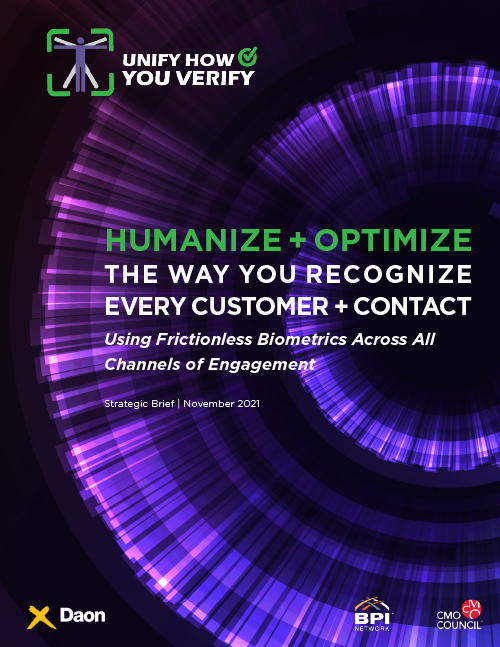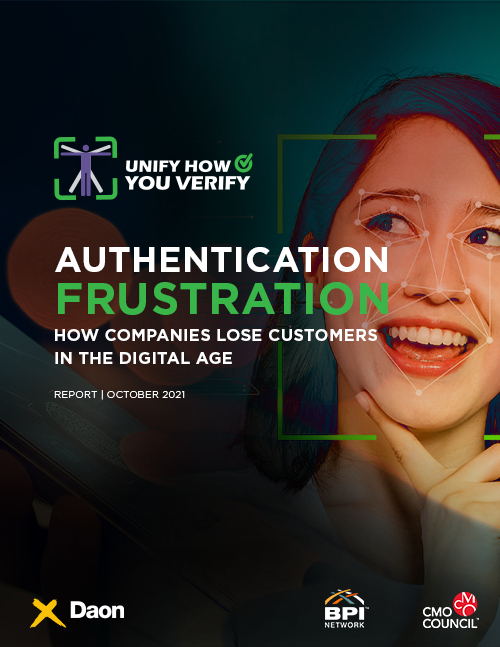There is a huge and fast-growing market need for this new authentication model, both to accelerate the pace and continuity of digital business, as well as deliver expedited and trusted customer onboarding, service, support, payments, account access, and problem resolution:
- Jupiter Research predicts 95 percent of mobile users will adopt biometrics for authentication by 2025
- Gartner predicts 70 percent of self-service customers will use voice verification by 2023
Beyond its capacity to make everything from payments to vehicles more secure, biometrics is also enabling a wide range of industries to become more scalable and efficient. The biometric technology industry is projected to be worth as much as $59B by 2025, per CB Insights’ Industry Analyst Consensus.
In particular, the open platform approach to multi-modal, cross-channel biometrics has relevance, value, and criticality across a wide range of industries, such as financial services, insurance, healthcare, government, payments, telecommunications, retail/ecommerce, hospitality, travel, social media, border security, etc.
Rapid escalation of digital business and consumer frustration with tedious and repetitive authentication processes is creating urgency for modernization and innovation. As a result, the identity market is forecast to more than double from $7.6 billion in 2020 to $15.8 billion in 2025, with biometrics outpacing other authentication technologies.
Research Insights
A recent CMO Council report, entitled “How Covid Has Changed The Channels Of Engagement,” finds consumers across generations and geographies are flocking to digital self-service channels when engaging with brands, yet many get frustrated when their needs aren’t met. This frustration has led to 73% of consumers questioning why they’re doing business with the brand.
Key findings include:
- Top five channels of engagement that consumers expect from brands include: email, website, voice call, live person, and SMS text
- 87% percent find it frustrating when needing to engage in multiple channels and having to repeatedly authenticate themselves in every new channel
Survey insights from Experian’s annual Global Identity & Fraud Report found that since the pandemic, consumers have an increasing level of comfort and preference for physical and behavioral biometrics as methods of security. In fact, for the first time in four years, passwords did not earn a spot in the top three most secure methods for authenticating a customer’s identity.
Experian’s research showed that the top three most preferred methods for authentication are:
- Physical biometrics, such as facial recognition and fingerprints
- PIN codes sent to mobile devices
- Behavioral analytics, passively observed signals that require no effort from the consumer
According to Visa research, the all-too-common frustration of forgetting a password may soon become a thing of the past, as people become more comfortable with new forms of biometric authentication. Among 1,000 Americans surveyed, the Visa findings revealed:
- More than 65 percent of consumers are already familiar with biometrics
- 86 percent of consumers are interested in using biometrics to verify identity or to make payments
- 70 percent of consumers believe that biometrics are easier, and 46 percent think they are more secure than using passwords or PINs
A survey of 22,000 individuals across 22 markets by Morning Consult for IBM Security X-Force shed light on a variety of consumer security behaviors impacting the cybersecurity landscape today and moving forward. As individuals increasingly embrace digital interactions in more realms of their lives, the survey found that many have also become primed with high expectations for ease of access and use across channels of engagement.
According to Daniel Newman, principal analyst at Futurum Research, there is a significant shift to biometric, multi-factor authentication—a positive step that can significantly reduce the risk of hackers gaining access to accounts, even if they are somehow able to obtain sensitive data like credit card information. It also provides peace of mind for business leaders concerned about customer relationships, frictionless experience, data security, and brand reputation.
Topics for Exploration
- What market factors or forces are contributing to more stringent verification of personal identity and greater use of trust-based authentication systems in customer engagement, eCommerce, or service channels?
- What customer feedback have you received regarding levels of satisfaction or preferences for easier, faster, and more convenient authentication of identity across all channels, devices, and verification modes?
- What security, business, brand and CX benefits could you see in unifying and simplifying identity assurance and verification across all channels of customer engagement on a single platform?
- What methods do you currently use to authenticate and onboard customers as well as secure their personal data and transactions?
- How do you see these methods evolving given the growing acceptance and preference for biometrics among consumers?
- What makes a biometric platform appealing, and where and how could you see it deployed in your customer interactions?








